It is now clear: environmental sustainability is also decisive in museums and in the framework of artistic-cultural projects. Both with the ratification of the Faro Convention by the Italian government(September 2020) in which new perspectives for a more coherent museology have been opened with the added interest in sustainable museum growth, and with the recent Rome Declaration, unanimously approved by the G20 Culture Council, in which sustainable development plans are encouraged, what that is emerging (and which will also be made even more evident by a forthcoming publication edited by Maurizio Vanni) is a commitment, now broadly made, aimed on the one hand at addressing the critical and urgent threat of climate change and on the other at working together to make the Glasgow UNFCCC (United Nations Framework Convention on Climate Change) a success.
These environmentally sustainable projects, however, must be joined by a host of other programs such as those aimed at energy conservation and efficiency, which have the goal of using renewable energy as well as new research studies that can also be pursued through research and residency projects. One of the most significant of these is currently underway in Greenland: The Greenland Project by artist Roberto Ghezzi (Cortona, 1978), curated by Mara Predicatori, will allow an in-depth study of the problem of melting glaciers. The project, which began on June 15 and will run until July 10, is designed in an alternative way: there is in fact a close collaboration between the artist and scholars, in particular with Biagio Di Mauro of CNR - ISP (Institute of Polar Sciences) and also includes the support of Robert Peroni’s The Red House and Phoresta Onlus and the contribution of Cartiera Enrico Magnani Pescia.
Sustainability, green thinking, full nature immersion: these are the key words of Roberto Ghezzi’s research, which has always been based on a strong interest in the natural landscape. Investigated both through pictorial representation and in situ investigations, his work moves from a scientific approach of organic reality, assuming aesthetic identity through matter.


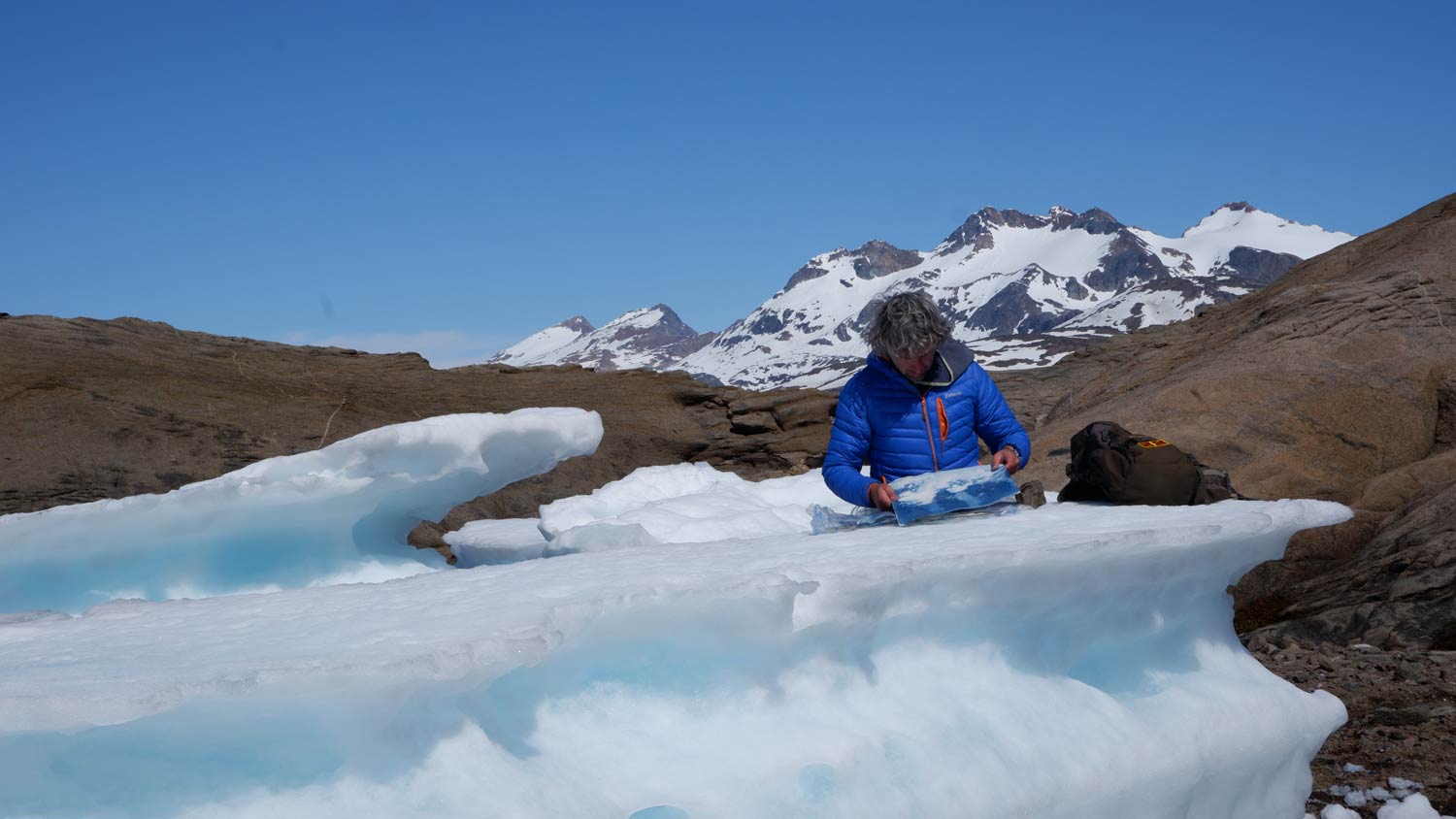
Specifically in Greenland, Ghezzi’s research that is focusing on the study of the phenomenon of glacier melting, and his investigations will be imprinted on specific media such as photo maps, sensitized through the cyanotype method, which are allowed to interact with the ice as it changes state. The tool is useful in allowing the traces left by the phenomenon being observed to be artistic and scientific memory.
Interesting clues and novelties are emerging from the first days of the residency and through collaboration with scholars. “Some algae also present in Greenland,” as Dr. Di Mauro explains, “accelerate the melting of Arctic glaciers by darkening the snow surface and contributing to heat absorption.” In short, Ghezzi’s much-documented residency (videos, photos, sensitized papers, notebook) is enabling an important advancement in even scientific studies of the phenomenon of glacier melting: in fact, it appears that “red snow” reduces albedo by at least 13 percent during the summer. And this is a fundamental fact that will be seriously considered.
Roberto Ghezzi, born in 1978, has had a long experience in the field of landscape design, looking in thehybridization between scientific studies, overturned Land Art and human intervention for new reflections and connections by experimenting the outcomes directly in nature. Naturographies, for example, a term he coined, was a project that fully embodied Ghezzi’s research and in which, as with the current project in Greenland, he chose precisely the site of investigation and then of installation.
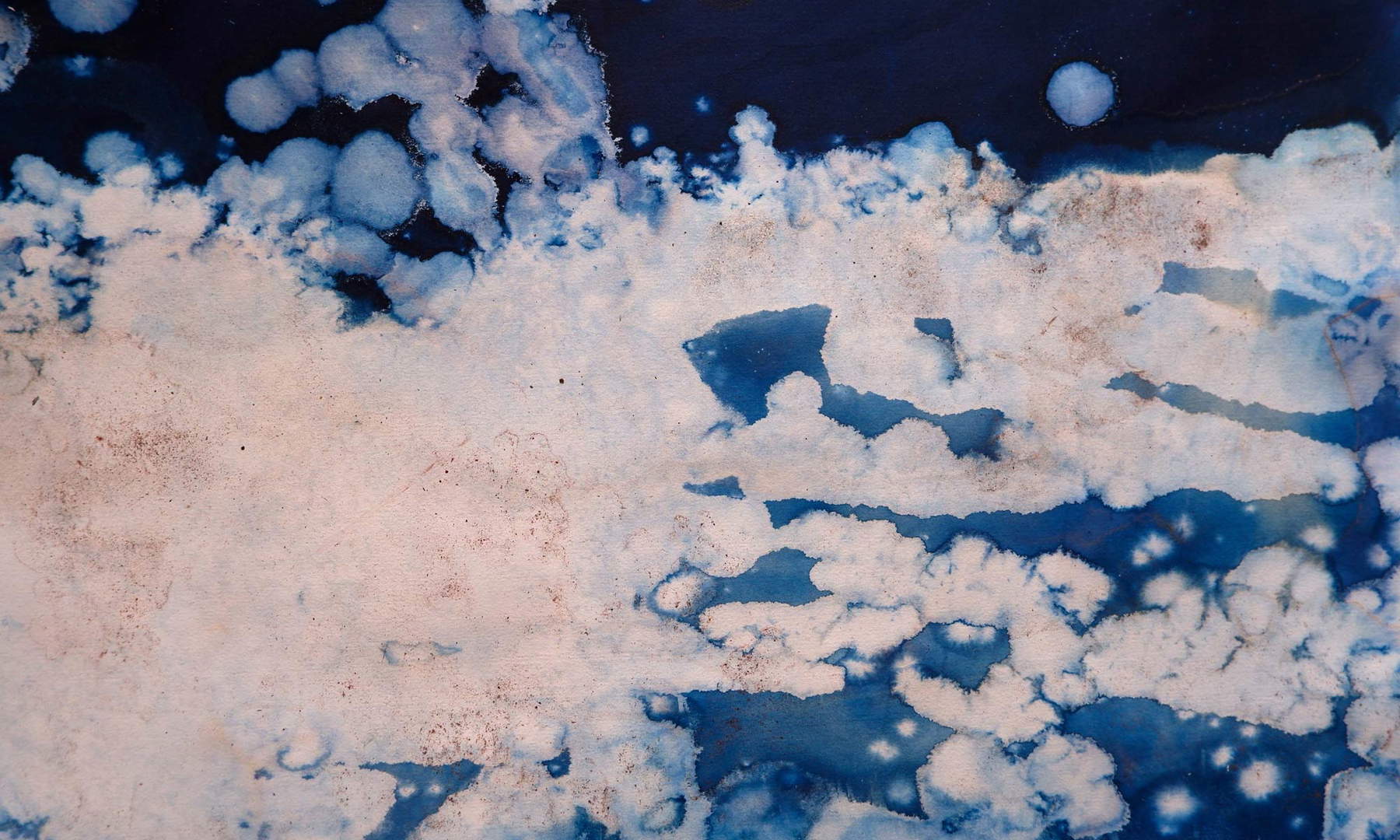
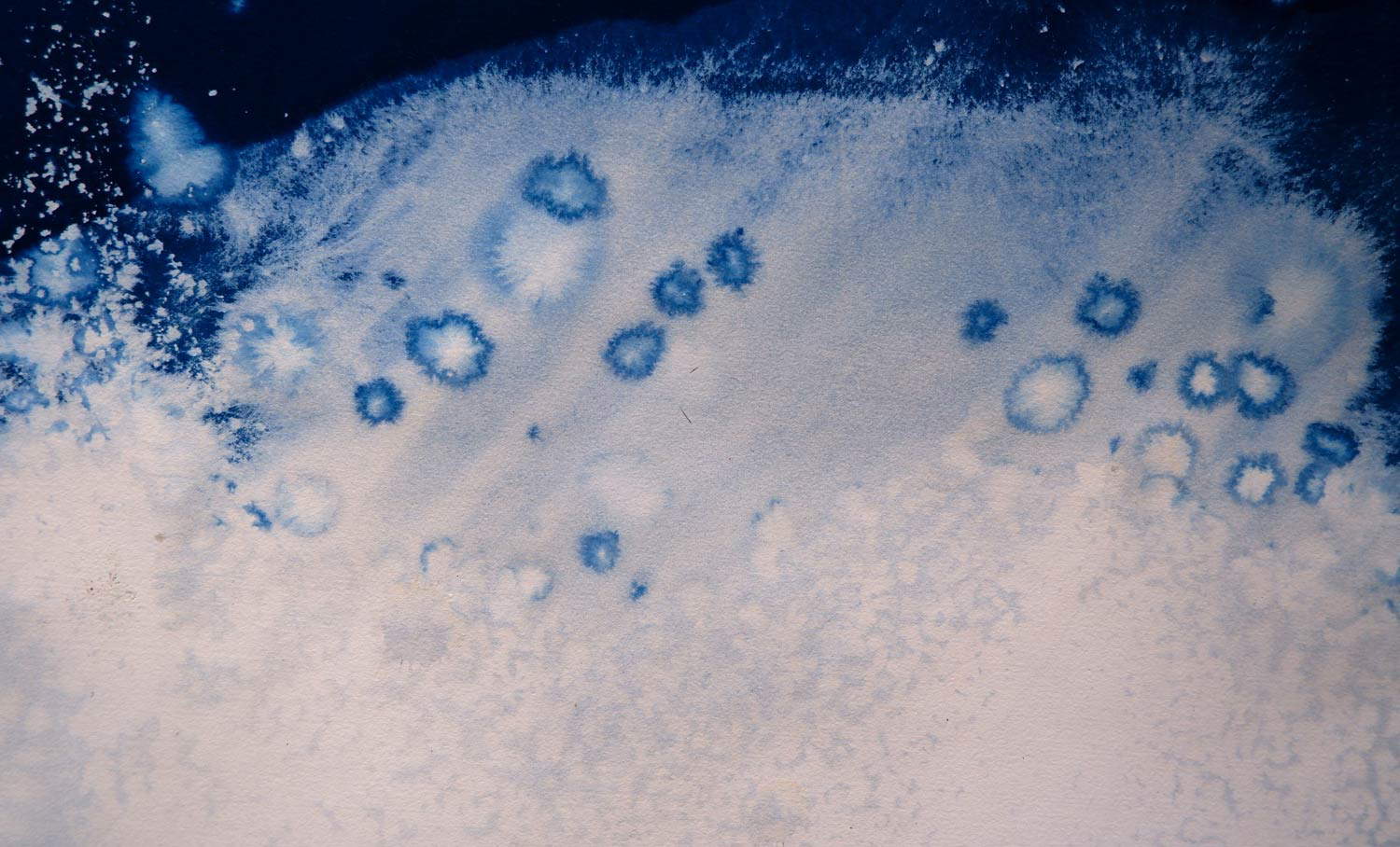
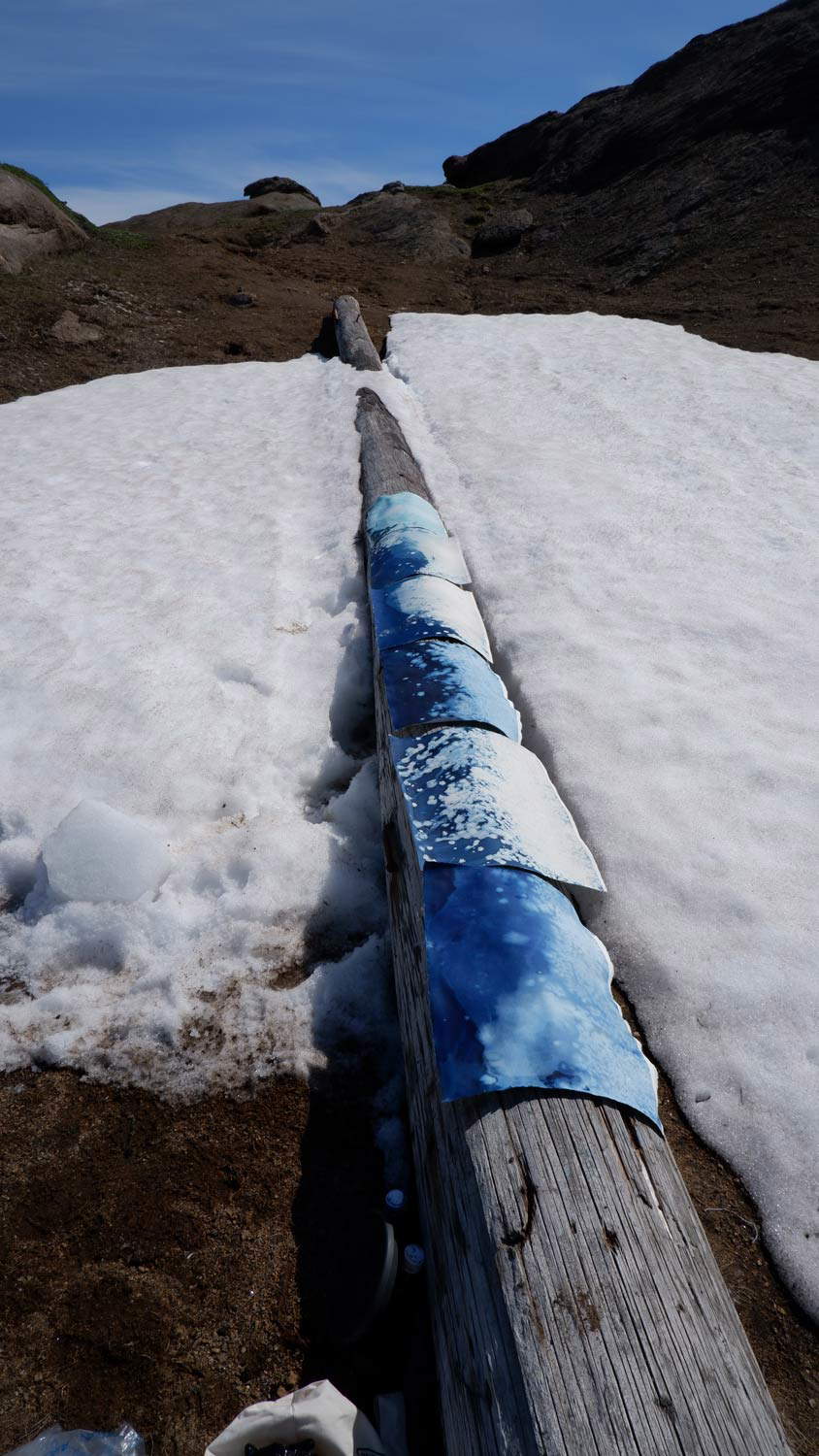
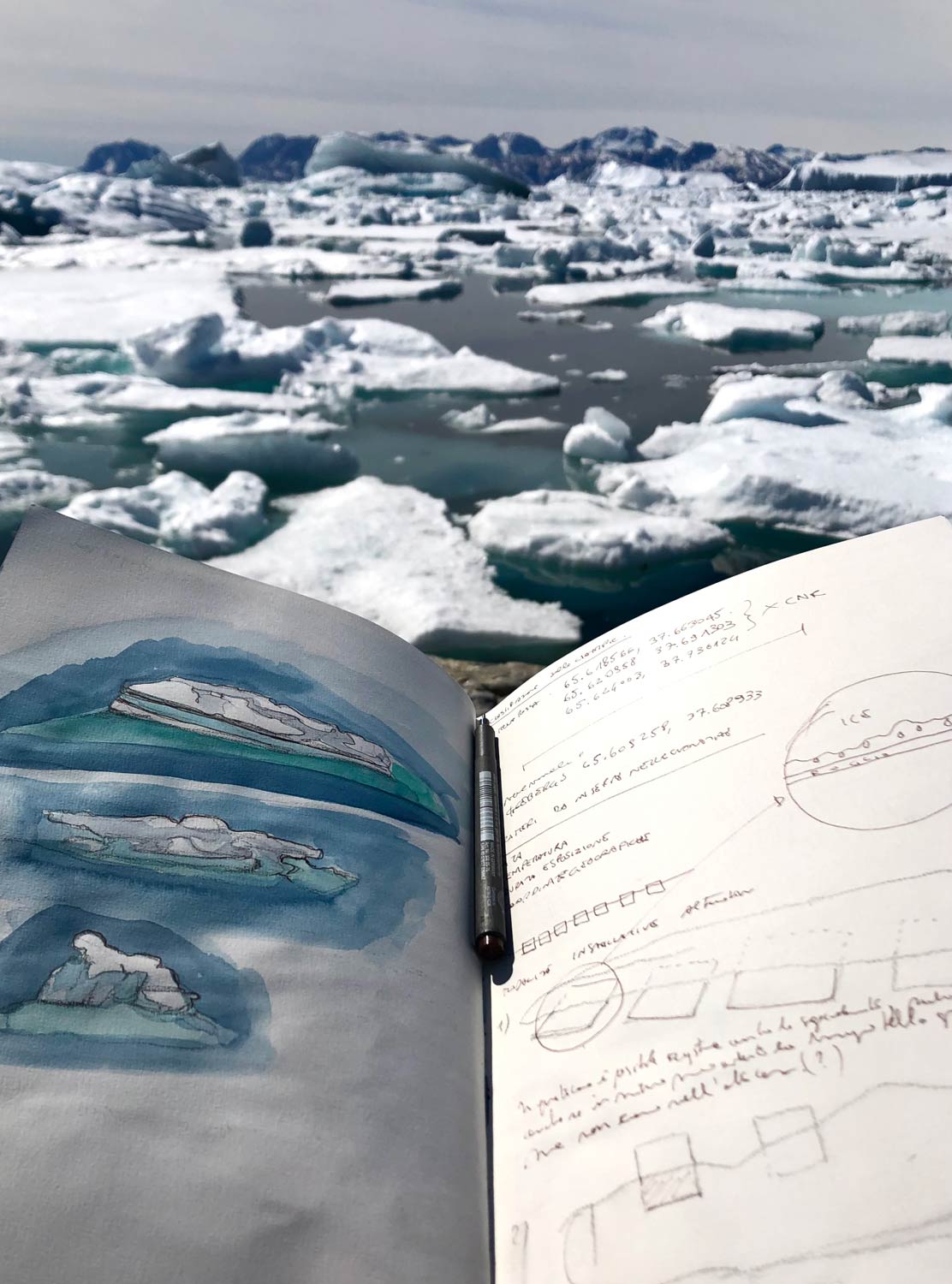
Each of his works presupposes a period of waiting and observation of the phenomenon one wants to investigate, proceeding with the fine-tuning of the material left to interact with the environment. In the case of The Greenland Project, Ghezzi works in the same spot for about twenty-five days, making cyanotypes of the same area in order to “photograph” the phenomenon of liquefaction from within, and thus of the retreat of ice, day by day, in a given location. This will produce a clear and unambiguous image of the phenomenon of the retreating glacier (and the speed at which this process occurs), with its own clearly delineated aesthetic.
The goal of his research is thus to defer to time and let Nature say and do the completion of the work. The light, minerals, waters and organisms living in that chosen area act to create other landscapes, always alive and different. Roberto Ghezzi has performed dozens of artistic residencies, experimental research and environmental installations not only in Italy but also in remote places on the planet such as Alaska, Iceland, South Africa, Norway, Tunisia and Patagonia.
Warning: the translation into English of the original Italian article was created using automatic tools. We undertake to review all articles, but we do not guarantee the total absence of inaccuracies in the translation due to the program. You can find the original by clicking on the ITA button. If you find any mistake,please contact us.